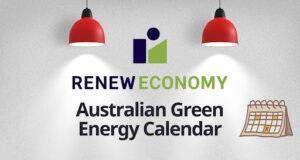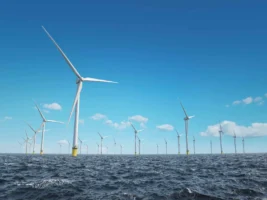Prime Minister Scott Morrison and his Coalition cabinet like to tell us that Australia will meet its Paris climate targets “at a canter”. But that’s not what the data tells us. New studies show Australia is on track to miss its Paris target by nearly a billion tonnes.
NDEVR Environmental is a private firm which has taken upon itself to do what the government should, but refuses to do – provide a detailed and timely analysis of Australia’s emissions profile.
Its latest assessment shows Australia – in the financial year ended June 30 – broke its emissions record for the third year in a row, and is almost certainly to break another record in the current year.
“Australia’s total national emissions excluding land use are projected to be 558 Mt CO2-e for FY2018,” the report says.
“This is the highest emission level on record (which began FY2002) and marks the third consecutive year of record levels of emissions. Australia’s emission trajectory continues to increase and it is expected that FY2019 will break the highest emissions record for a fourth consecutive year.”
Worse, if Australia continues its current emissions trajectory, then by 2030, Australia will have emitted more than 960 million tonnes of Co2-e over the Paris trajectory.
“This is equal to 1.8 years of Australia’s entire emissions,” the report says, adding that Australia is already blowing its “carbon budget” – in just five years it has used 28 per cent of its budget out to 2050.
And while electricity emissions are falling – thanks to rooftop solar and large-scale renewables encouraged by the renewable energy target that the Coalition would like to have killed – emissions from transport have jumped to the highest on record, due mostly to the heavily subsidised use of diesel in heavy vehicles.
Little wonder the Climate Council, and any number of other organisations, are pushing for policies to impose emissions standards on cars (Australia is the only western country without such a policy), incentives for electric vehicles, and a complete rethink of our transport options beyond building yet more highways.
Remember, Australia’s Paris target – of a 26-28 per cent cut in 2005 levels by 2030 – was only ever going to be a down-payment to the Paris goal of keeping average global warming well below 2°C and possibly to 1.5°C.
 The efforts announced so far will only cap average global warming to between 3°C and 4°C. Another round of individual country commitments is expected in coming years, but Morrison has made clear there will be no further commitment from a Coalition government.
The efforts announced so far will only cap average global warming to between 3°C and 4°C. Another round of individual country commitments is expected in coming years, but Morrison has made clear there will be no further commitment from a Coalition government.
Morrison’s position is at odds with general expectations in the community, with polls showing overwhelming support for climate action and a shift to renewables.
But Morrison lives in a closeted world. Everywhere he turns he is surrounded by climate deniers and anti-renewables activists.
In his party room, and on his front bench, he is urged to follow Trump out of Paris and dump its target. Much of the same mob are calling for the renewable energy target to be halted immediately, both the big version and the small version.
In his own offices, his chief of state is John Kunkel, who for more than six years was the deputy head of the country’s main coal lobby group, the Minerals Council of Australia – which thoughtfully provided the lump of coal he waved around in parliament – and who was then head of government lobbying for Rio Tinto, one of the MCA’s two biggest donors.
Morrison has appointed anti-wind campaigner Angus Taylor as energy minister. So ingrained is Taylor’s antipathy to this energy source that he didn’t even mention it as an option when giving his first speech as minister, and when he does, says there is too much of it.
Taylor’s mantra is to fulfil his remit as the “minister for lower prices”, yet while he attempts to jaw-bone the market and threaten AGL if it closes “fair dinkum” power plants like the ageing and unreliable Liddell, the government does nothing as its fully-owned Snowy Hydro is in the thick of outrageous price gaming in the wholesale market.
Morrison’s environment minister is Melissa Price, a former mining industry lawyer who questions climate science and who is keen to see a new coal-fired power station.
“Whether you believe so-called climate change is due to human behavior, planetary motion, ocean currents or solar variability et cetera, to me, is not the point,” Price once told parliament.
And away from all this, Morrison is a committed member of the Pentecostal church, whose view on climate change is simple: Only Jesus can change the climate. His main media consumption – the Murdoch press and the shock-jocks on talk-back radio – refuse to accept climate science.
You can’t make this stuff up. And the grim reality is that climate and energy politics in Australia in the federal arena have never been worse. Little surprise then that industry lobby groups are now turning to Labor and the states for a solution, as we wrote a fortnight ago; presumably in the belief, or the hope, that the Coalition will lose the next federal election, which must be held by May.
The business lobby groups are hearing loudly from their members, who by and large don’t believe the garbage about electricity prices fed to them each day by the Coalition and the mainstream media, and are turning, en masse, to contract new wind and solar plants, and firming power.
As even the latest Deloitte study into Global Energy Trends notes, solar and wind move from mainstream to preferred source of electricity. “The case for renewables has never been stronger,” it says.
Away from the mad-house of Canberra, even Coalition governments are getting on with the job. In South Australia, the Liberal government is happy to usher its state towards a 100 per cent renewable energy grid, encouraging battery storage at household and utility scale, and supporting a new interconnector to NSW.
The Labor government in Victoria will be thankful for that, because that new link to Wagga Wagga will include a side-link to Mildura, in turn boosting the grid strength of its central west region (Ballarat to Bendigo to Horsham and Mildura) that will unlock gigawatts of wind and solar projects that may otherwise struggle to go ahead.
Victoria this week delivered the results of its first, and Australia’s largest, renewable energy auction, a process that will see 928MW of new wind and solar projects built, all of which will receive little more than half what the state’s gas and coal plants have been receiving over the last few years.
The process signalled another significant downward shift in wind and solar prices, and this downward fall in costs is expected to be confirmed when the Queensland government finally pulls the trigger on its long-awaited auction, Renew400, with some stunningly low solar prices on the cards.
Indeed, as Morgan Stanley notes in a new report, new wind and solar projects don’t need a hefty subsidy to be built, or any subsidy at all, and recent off-take agreements suggest negative implied LGC prices (Large scale generation certificates).
“Put another way, AGL and (Origin)’s latest PPAs – (power purchase agreements with wind and solar farms) – provide them with free LGCs and cheap power,” the Morgan Stanley report notes.
It goes on to say that these big gen-tailers are using the LGCs to their own profit, using them to arbitrage on the spot market (which has a very high price of more than $80/MWh because some smaller obligated parties forgot to build renewables, and so have to buy LGCs on market).
And the big retailers are profiting from this market, just as they do in the wholesale market.
South Australia and Victoria are even dipping back into the bag of subsidies – this time for household storage. But as South Australia’s (Liberal) energy minister Dan van Holst Pellekaan pointed out in this week’s Energy Insiders podcast, this is justified because of the considerable benefits it will bring to all consumers.
And this subsidy is designed to taper off quickly, and favour lower income households. South Australia’s plans have already had the happy outcome of inspiring Germany’s Sonnen to build a battery manufacturing plant at the old GM Holden site in Elizabeth, proving that renewables, storage and manufacturing can go hand in hand.
That’s not good enough for some. The Murdoch media has been campaigning relentlessly against the Victoria initiative, with one regional daily even digging up the old furphy that solar farms could ruin local orchards.
Even the AFR followed suit, delivering an editorial on Thursday that might have been written by Taylor himself, as it picked out all his favoured and discredited arguments against renewables.
The AFR’s credulous editorial writer complained about the “force-feeding” of renewables into the grid by the Andrews government for the closure of Hazelwood. The Victorian Labor government is clever, but it doesn’t have a time machine – little of what it is providing incentives for was actually built before Hazelwood’s closure.
The AFR complained about the distortions in the energy market, but I’ve not seen the editorial writers complain about the lop-sided rules that allow the big companies to game the markets as they have this week, and many times previously. Gas, they should know, is not out of reach because of moratoria, but because it is dramatically more expensive than the alternatives.
The AFR can’t understand the Victoria auction scheme, describing it as a “mad” subsidy – when it fact it proposes to pay wind and solar little more than half the price that coal and gas plants have received this past two years. Can’t the editorial writers at the AFR do simple arithmetic?









